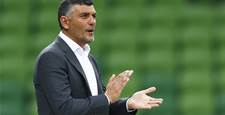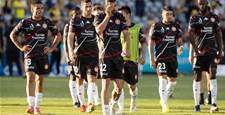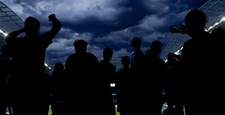ON THE topic of drunken conversations, I found myself at a bus stop in London at the inebriated end of a Saturday night and it so happened that the focus for discussion whilst awaiting the number 37 bus was the question: “Who is the world’s most famous sports star?”
This was quite fortunate as I consider myself an expert on such important matters and after eight pints of Guinness, I also consider my debating skills to be second to none. So when asked for my opinion, I ventured without hesitation that it was in fact Muhammad Ali.
Ahh yes, the lads all concurred, I had settled the argument for them as they mocked the one silly girl in the group who had been stupid enough to consider David Beckham. So I was quite proud of myself until I realised that actually, she was right.
David Beckham is the most famous ‘soccer' star in the US, the most famous sports star in Europe and significantly he is the most famous sports star in Asia, which wins him the world. Even my girlfriend knows who David Beckham is. He's Posh Spice's husband. He also happens to play a sport referred to as the ‘The World Game'.
Football isn't just the international game though. In Australia, it is also the only national game. In 2006 when Melbourne Victory hosted Sydney FC and 50,000 spectators attended the match, only the Manchester derby in the English Premier League had a larger attendance for a regular home and away football match across the globe that weekend.
Rugby league had always been Sydney's game and Aussie Rules had always been Melbourne's game so finally the cities of Sydney and Melbourne could express their animosities on a level playing field. The other sport with a claim to true national representation - cricket - could never hope for that kind of attendance at an interstate match.
So where are the crowds now? Five years is not long enough to build up the tribal support that sustains the other sporting codes in Australia and football clubs across the globe. As the Socceroos' exploits at the World Cup become a distant memory and the Australian economy becomes fickle, so have A-League crowds.
What the A-League needs now is a talking point that will unite people around the bus stops of Australia at 3am in the morning.
Dwight Yorke provided the catalyst for this in the A-League's debut season when he lent Sydney FC their glamour club image with his flamboyant style off the pitch. Robbie Fowler however, has failed where Dwight Yorke succeeded. The fact is that only Australians who have an encyclopaedic knowledge of the English Premier League relative to the rest of the population would know who Robbie Fowler is.
Fortunately however, a great green and gold hope lies ahead. As the Socceroos World Cup heroes trickle back to our great brown land, the prospects for the national game to rise through the echelons of Australian sport are intriguing.
Jason Culina and John Aloisi were the beginning of this trickle but outside of those already converted to football by the 2006 World Cup, their stars are dim.
Mark Viduka is the next great hope for the A-League. The big V may be out of time to be the saviour for the Socceroos but there is still great potential here for him to serve Australian football by playing in the A-League. First however they need to coax him off his yacht and secondly they need his body to hold up to the rigours of A-League competition (which will help if he's on the same team as Kevin Muscat).
If the A-League can succeed with the Duke, there will follow the very real and very soon prospect of Harry Kewell, Tim Cahill, Lucas Neill and Scott ‘former Wollongong bus driver' Chipperfield following in his footsteps.
If those players can't spark a debate at the bus stop, then I suggest Frank Lowy give Posh Spice a call. Maybe she can convince Muhammad Ali to play for Sydney FC.












